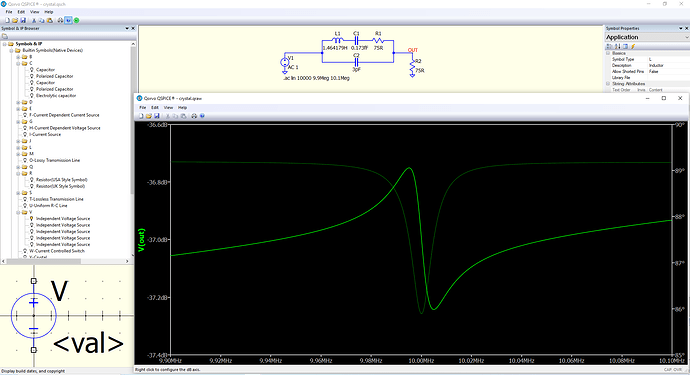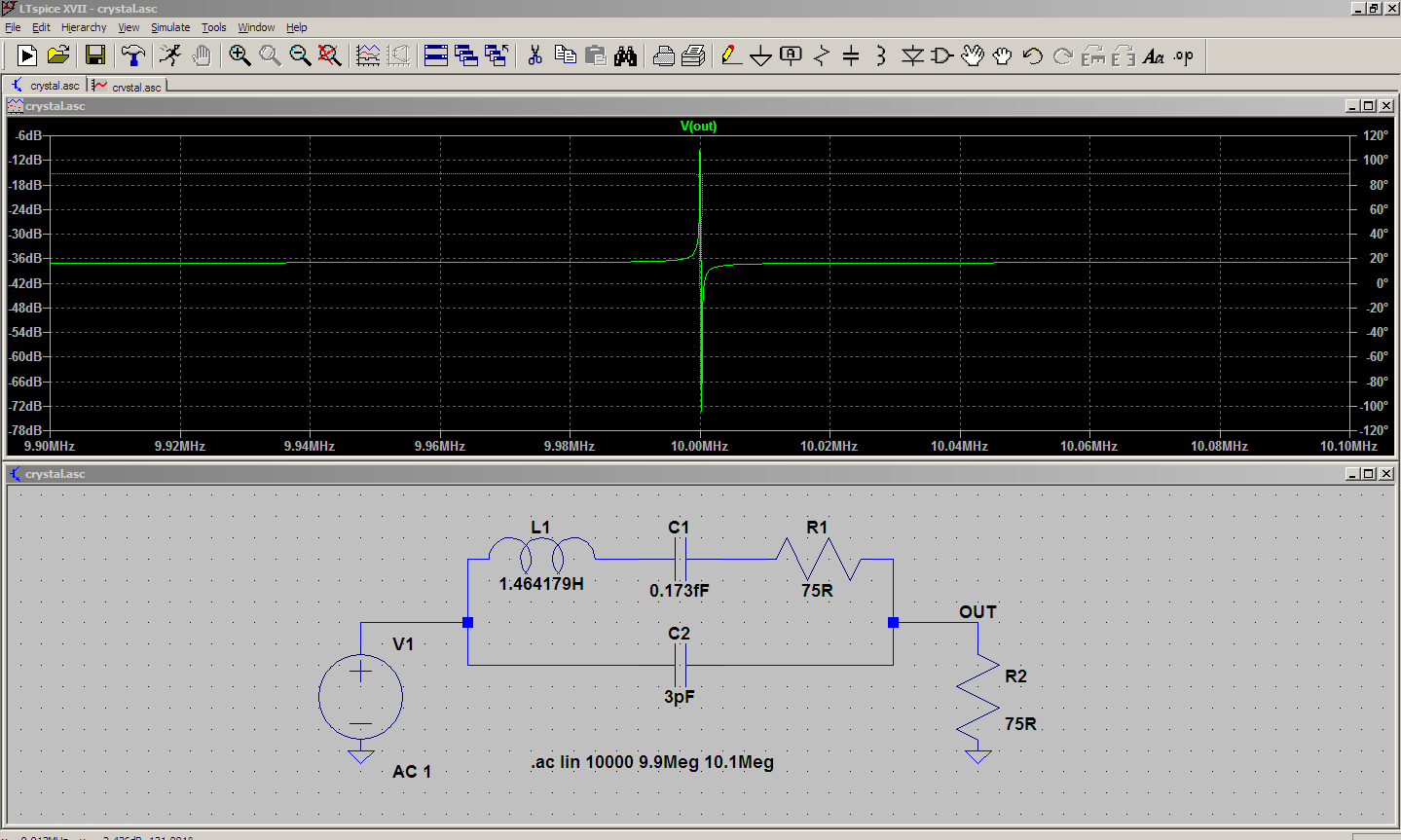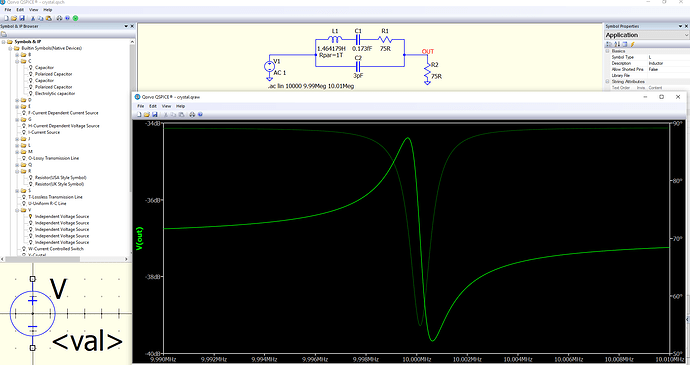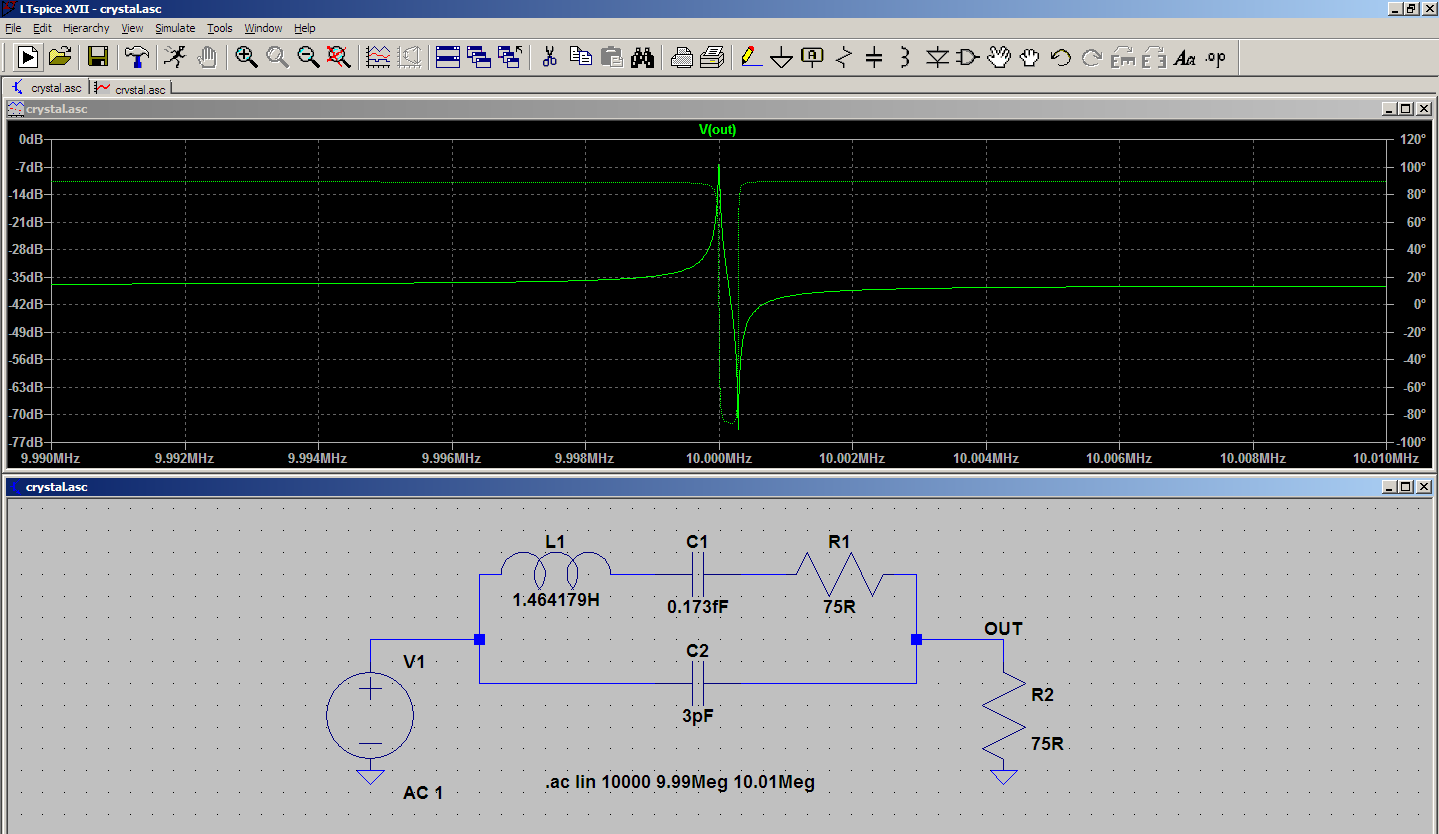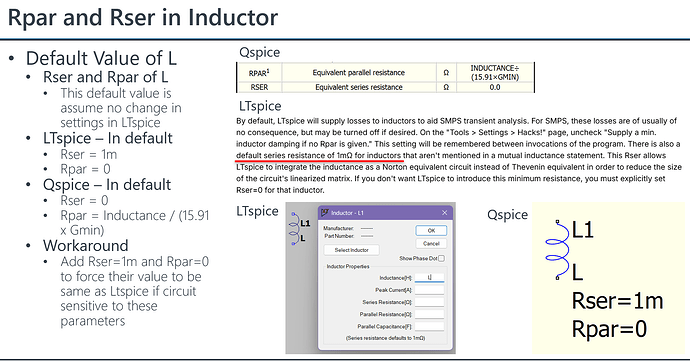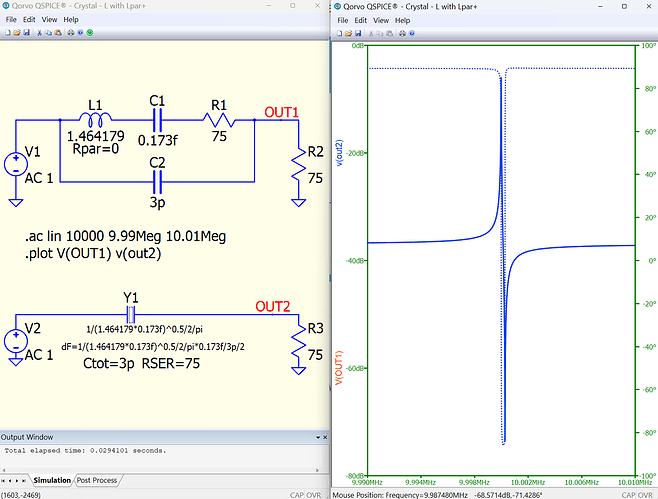I have tried to simulate a reasonably typical crystal and it came out more of a joke rather than a crystal.
Are there some secret setting qspice needs to have to do this?
Leo
Add Rpar=1T to inductor.
Best regards
Rpar plays an important role in crystal simulation, and there have been multiple discussions in this forum. Although LTspice and Qspice were created by Mike Engelhardt, Mike changed the default values of Rser and Rpar for inductor in Qspice. In general, the default values aid in convergence and are not typically noticed during simulation. However, simulating components like crystals, which have high inductance and extremely low loss, may be impacted by this difference.
- LTspice in default with Rser=1m and Rpar=0
- Qspice in default with Rser=0 and Rpar=Inductance/15.91/Gmin
In your example, if you add the instance parameter Verbose for the inductor, the Output Window will return the exact value of Rpar that has been assigned by default.
@ivan1 suggestion is in the right direction, but Rpar=1T is still not large enough. To mimic an infinite value as in LTspice, set Rpar=0 to match LTspice.
Crystal - L with Lpar.qsch (4.1 KB)
Thanks, I will try that.
I have shown how to get the parameters of an embedded crystal from an equivalent circuit.
Crystal - L with Lpar+.qsch (6.3 KB)
Thanks but it would be useful if standard crystal component allowed L1/C1/R1 parameters to be input directly. This is how the oscillators industry rolls and this is what you measure with crystal analysers like E4916A.
Leo
